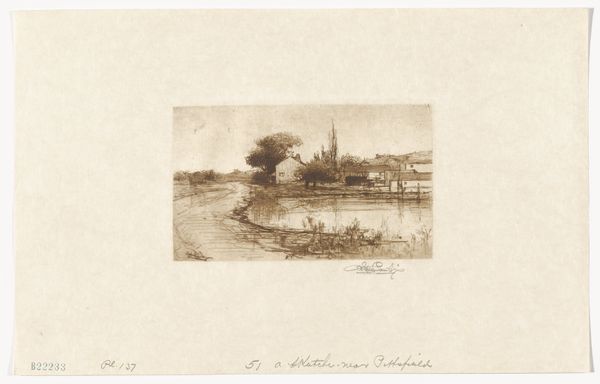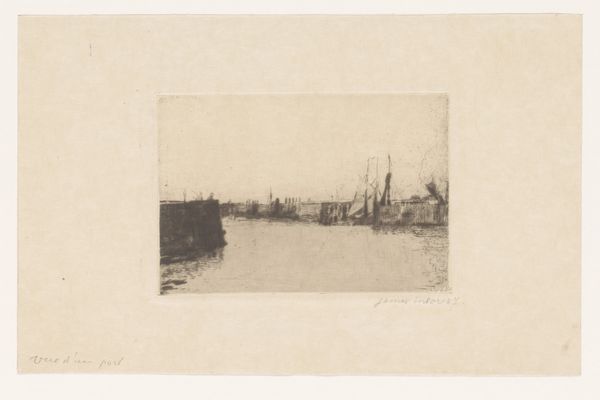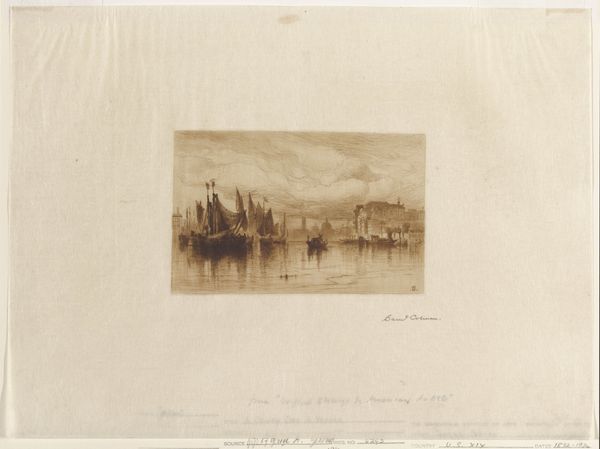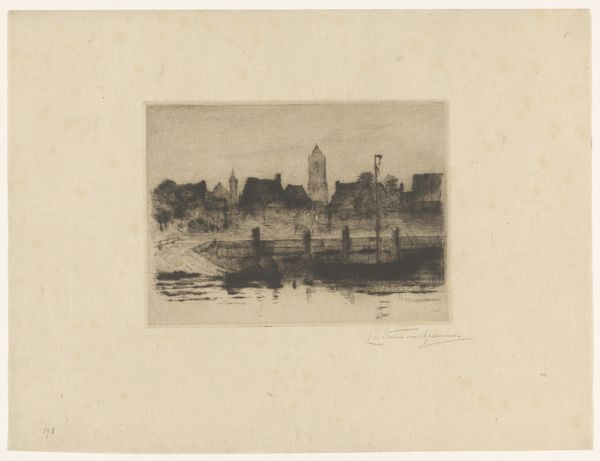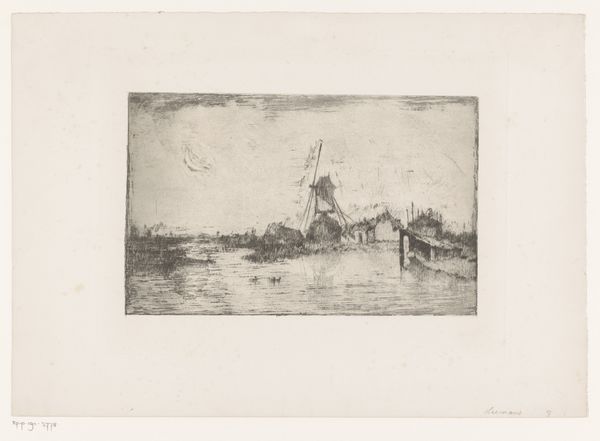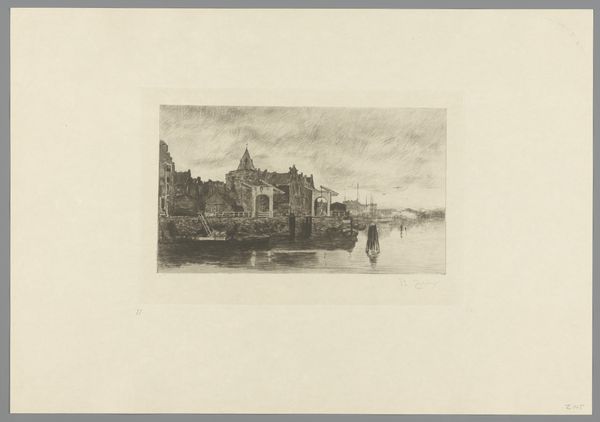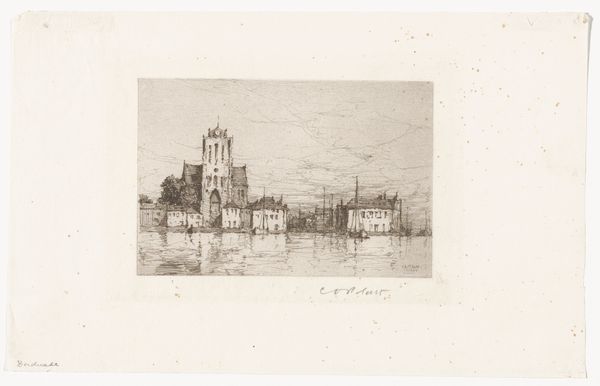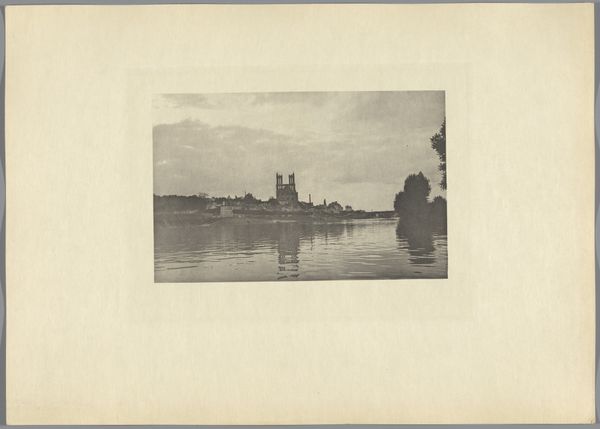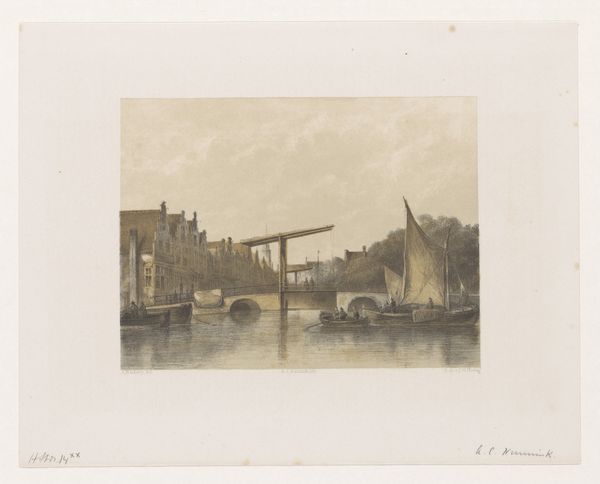
Dimensions: height 150 mm, width 179 mm
Copyright: Rijks Museum: Open Domain
Curator: Here we have "Gezicht op de Nieuwe Haven in Dordrecht," or "View of the New Harbor in Dordrecht," an etching by Willem Witsen, created around 1899-1900. It’s currently held here at the Rijksmuseum. Editor: It's quite striking. There's a stillness, almost a solemnity to the scene despite it depicting a bustling harbor. The muted tones emphasize the water and the way it reflects the city’s architecture. Curator: Witsen was deeply embedded in the art circles of his time, particularly the Amsterdam Impressionists. This work reflects a fascination with capturing atmospheric effects, much like his contemporaries. He also came from a position of wealth, with connections that helped him gain exposure in prestigious venues, playing an active role in promoting art. Editor: Yes, the etching technique is masterful. The use of line and shadow gives the buildings, especially the church tower, a sense of age and permanence. The tower looming over the scene almost evokes a feeling of spiritual watchfulness over the city, a symbol of endurance, reflecting the cultural memory embedded within the city’s visual identity. Curator: Dordrecht has always been a strategically and economically important city in the Netherlands, playing a role in major historical moments and Witsen’s decision to portray it isn’t accidental. Such scenes cemented ideas of Dutch identity, offering reassuring imagery to a nation grappling with modernization and shifting social structures. Editor: And the water, constantly in flux, mirrors the changing nature of time and history, a reflective surface showing a slightly distorted but nonetheless present reality. I read the composition also as speaking to Dordrecht as a site of transition and connectivity through the maritime activities. Curator: Precisely. Witsen’s composition frames the city from across the water, and this emphasizes its role as a trade hub, connecting Dordrecht to wider economic networks. Editor: I find that the beauty in such art pieces stems from the quiet contemplation it invites. It reveals how much depth is contained within seemingly simple representations of our surroundings. Curator: Indeed. And exploring it highlights art's enduring relevance, particularly in interpreting the forces that shape our environment, our history, and our identity.
Comments
No comments
Be the first to comment and join the conversation on the ultimate creative platform.


